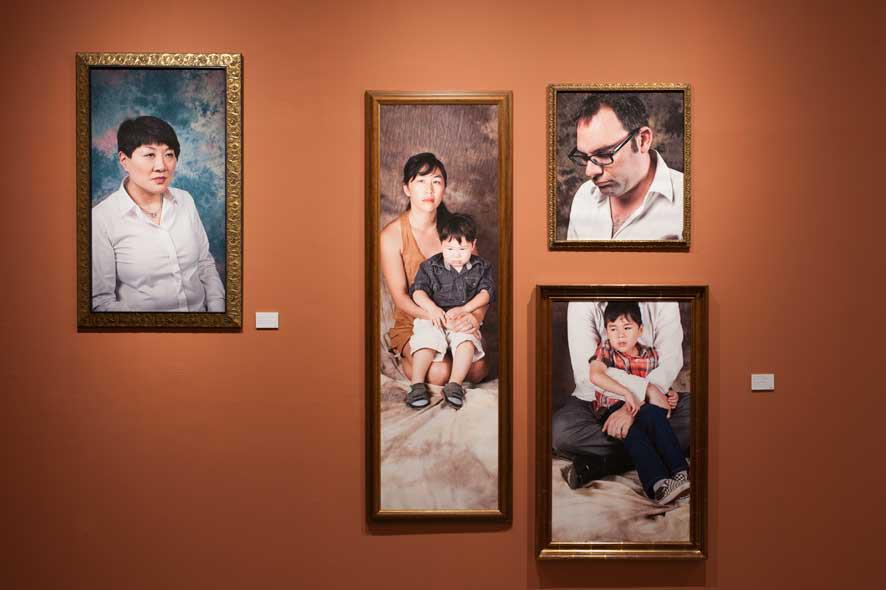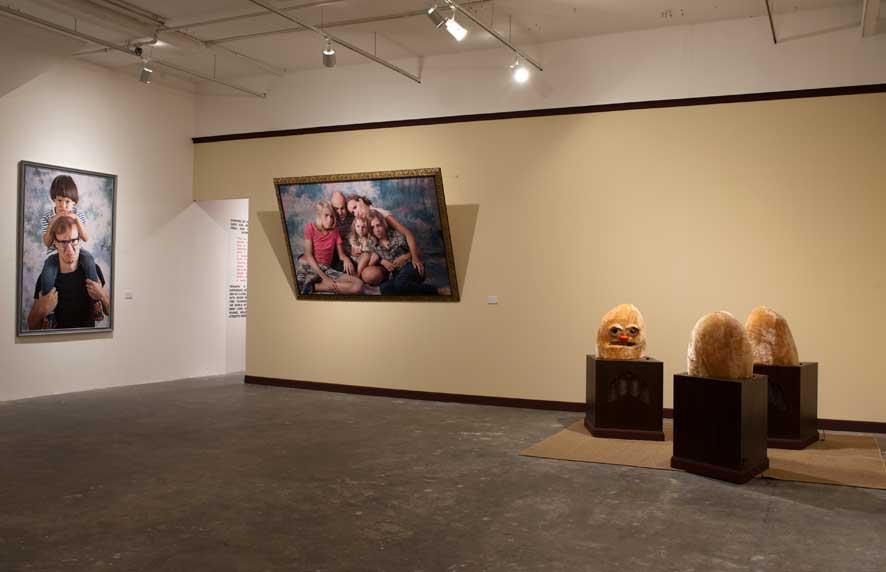Reviews & Articles
Adrian Wong: Troglodyte See The Light
John BATTEN
at 12:05pm on 18th February 2012





Captions:
Installation photographs of Adrian Wong's Troglodyte See The Light exhibition showing: 'Affective Portraits' by Adrian Wong with David Boyce; animatronix sculptures by Adrian Wong; wall text by Adrian Wong with Lee Weng Choy. (All photographs by David Boyce)
(原文以英文發表,評論《王浩然: 穴居人看光》。)
Reminding us of the power of language and speech, the popular linguist and psychologist Steven Pinker explained, “As you are reading these words, you are taking part in one of the wonders of the natural world. For you and I belong to a species with a remarkable ability….That ability is language. Simply by making noises with our mouths, we can reliably cause precise new combinations of ideas to arise in each other’s mind.” Adrian Wong’s exhibition, however, explores an oft-forgotten flipside of this “remarkable ability”, our capacity to also communicate non-verbally.
Inspired by his own periods of isolation, including meditation and acute bouts of agoraphobia, and experience in communicating in silence, Wong’s expansive exhibition explores emotion, smell, gesture, animal responses and a range of Neanderthal-like grunts – all examples of, as he explains, “the rarely attended-to nature of pre-linguistic thought.”
Dominating the exhibition is a series of “affective portraits”, done in collaboration with photographer David Boyce. These impressive photographs depict extremes in emotional communication - anger, sadness, despair, disgust; everything except happiness – and have been stage-directed by the artists, each photograph precisely composed in a portable photographic studio. To elicit these emotions, the subjects were directed to isolate muscles in the face and neck and hold a pose or visualize actual emotional situations; or, were exposed to stimuli and props, such as cut onions or disgusting imagery, to produce a desired facial expression resulting in these “affective” portraits.
Highlighting the importance of smell as a stimulus to evoke emotion and non-verbal communication, pot-plants placed near the photographs camouflage aerosol-sprayed smells – ranging from pleasant perfumes to unpleasant bodily odours. The exhibition title relates to these olfactory senses, as the humanoid Troglodytes in the Dungeons & Dragons fantasy game primarily communicated by using a vocabulary of smells produced by their scent glands.
The ‘models’ in all these portraits are predominantly people from a section of Hong Kong’s visual art scene. Despite the familiarity of faces, the portrayal of such emotion, its raw universality and such pained imagery overrides knowing those involved and the theatre-like direction of the setting. It is compellingly angst portraiture.
Complementing the photography is a series of animatronic figures scattered around the gallery. These mixed-media sculptural pieces move and talk. One 2-metre long piece emits primeval sounds; Wong recorded his own speech for one month and then edited out all recognisable language, leaving only guttural and linking sounds: grunts and “mmh”, “ah” and “umm.” In another piece, three animatronic figures have a ‘conversation’, but the dialogue is that which has been recorded of owners speaking to their pets – the implied reply ‘dialogue’ from the animals is their silent, pre-linguistic, but surely innate emotional responses.
In a collaborative text, Wong and Lee Weng Choy cite the famous deaf-blind American activist and writer Helen Keller, who was taught language despite her disabilities. In a variation of a real life Helen Keller joke, a joke – in the USA - that is intentionally ‘sick’ or not funny, the punch line cites Charlie Chaplin as proclaiming, “I feel like the maid of Corinth.” The Corinthian maid, according to myth, was the first person to draw. This anecdote strengthens the message in the exhibition that our “remarkable ability” in communicating is not only through our use of spoken and written language.
Exhibition: Adrian Wong: Troglodyte See The Light
Date: 13.1. – 12.2.2012
Venue: Osage Kwun Tong
A version of this review was published in the South China Morning Post on 29 January 2012.
